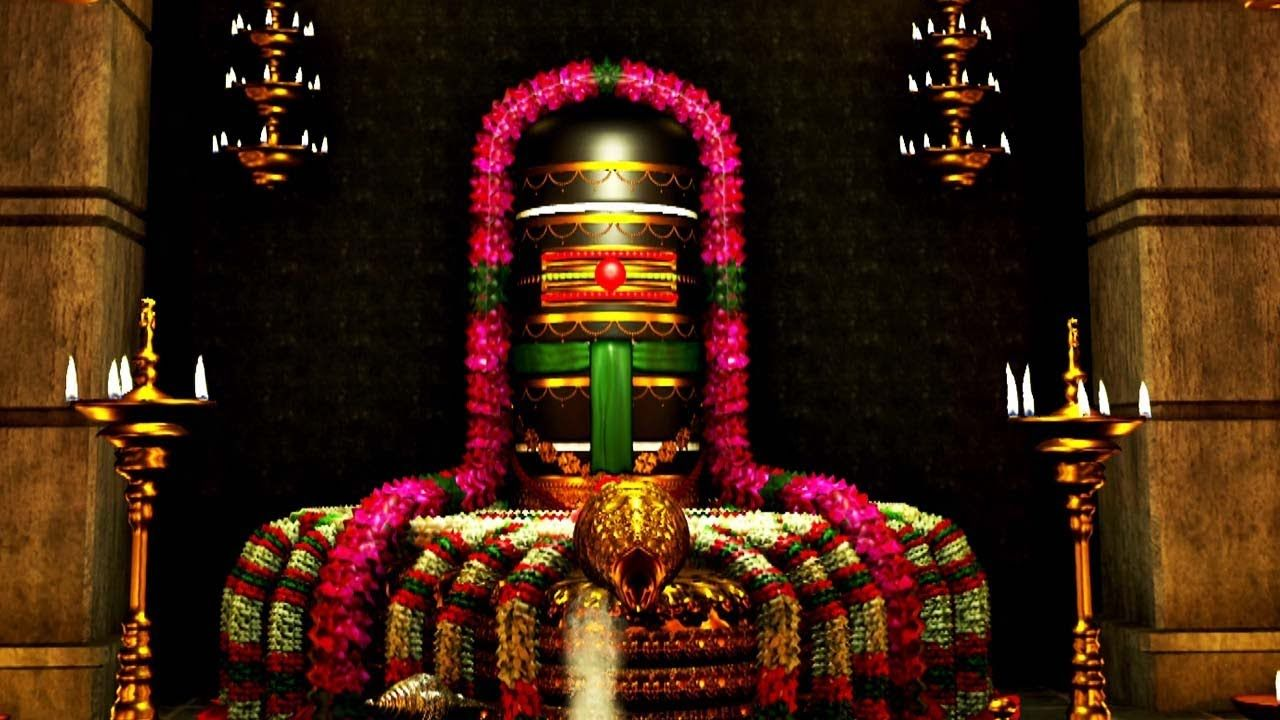In India, there are 12 Jyotirlinga. Because Lord Shiva is thought to have initially appeared on Earth during the Aridra Nakshatra, the Jyotirlinga is held in particular awe. The Jyotirlingas lack any distinctive features. Many people think that when you reach a great level of spiritual enlightenment, you can see these lingas as columns of fire piercing through the earth. There were originally 64 Lord Shiva’s temples (Jyotirling) as, but only 12 are regarded as being very blessed and revered. The name of the presiding deity appears on the 12 Jyotirlinga temples in India. Each was said to be a distinct manifestation of Lord Shiva.
1. Somnath Jyotirlinga, Gujarat
The Somnath Temple in Gujarat, which is regarded as the first of the 12 Jyotirlingas, is located close to Veraval in the (Prabhas Kshetra) Kathiawad district. This Gujrat jyotirling is a revered pilgrimage spot in the nation. The creation of this Jyotirling in Gujarat is described in a tale. The moon, who was married to 27 of Daksha Prajapati’s daughters, was said to have loved Rohini the most of all of them, according to the Shiva Purana. When Prajapati observed his disregard for the other spouses, he cursed the moon, wishing it would go completely dark. Shiva granted the disturbed moon’s wish to regain his lost luster and shine after he and Rohini visited Somnath and worshipped the Sparsa Lingam. Lord Shiva took on the name Somchandra at his request and stayed there forever. Under the name Somnath, he rose to fame. Since then, the Somnath Jyotirlinga has undergone numerous periods of destruction and reconstruction.
2. Mallikarjuna Jyotirlinga, Andhra Pradesh
On the Shri Shaila Mountain, by the banks of the Krishna River, in the southern part of Andhra Pradesh, is where you’ll find the Mallikarjuna Temple. It’s also referred to as “Kailash of the South” and is one of the most important Shaivite shrines in India. In this temple, Mallikarjuna (Shiva) and Bhramaramba are the presiding deities (Devi). The Shiva Purana claims that Kartikeya was upset because Lord Ganesha was married off before him. He departed for Kraunch Mountain. He received no consolation from the Gods, who all tried. Shiva and Parvati eventually made their way to the peak but were turned back by Kartikeya.
3. Mahakaleshwar Jyotirlinga, Madhya Pradesh
The Mahakaleshwar Temple is situated in the deep Mahakal forest in Ujjain, Madhya Pradesh, beside the Kshipra River. In Central India, this Jyotirlinga in Madhya Pradesh is a significant place of worship. The origin story of this Jyotirlinga is the subject of several stories. According to the Puranas, a five-year-old boy named Shrikar was mesmerized by the king of Ujjain’s devotion to Lord Shiva. Shrikar began worshiping as Shiva after taking a stone. Despite numerous attempts to discourage him in various ways, his adherence grew. Lord Shiva was pleased by his devotion and took up residence in the Mahakal forest as a Jyotirlinga. In addition, Hindus value the Mahakaleshwar Temple for another reason.
4. Omkareshwar Jyotirlinga, Madhya Pradesh
One of the most revered Jyotirlingas is Omkareshwar Temple, which is situated on the Madhya Pradeshn island of Shivapuri in the Narmada River. “Lord of Omkara” or “the Lord of the Om Sound” is what the name Omkareshwar signifies. According to Hindu scriptures, there there was a significant conflict between the Devas and Danavas (Gods and Demons), which the Danavas ultimately prevailed in. The Devas suffered a severe setback as a result, and they prayed to Lord Shiva. In response to their prayers, Lord Shiva manifested as Omkareshwar Jyotirlinga and vanquished the Danavas. As a result, the Hindus deeply revere this location.
5. Baidyanath Jyotirlinga, Jharkhand
Vaijnath or Baidyanath are other names for the Vaidyanath Temple. It is situated in the Santal Parganas region of Jharkhand in Deogarh. One of the most revered Jyotirlinga shrines, its followers hold the view that genuine worship of the shrine frees one from all anxieties and suffering. Many hold the view that by worshiping this Jyotirlinga, one can achieve moksha or salvation. In accordance with a well-known myth, the demon king Ravana prayed to Lord Shiva to visit Sri Lanka and grant it invincibility. Lord Shiva destroyed Mount Kailash as Ravana attempted to take it with him.
6. Bhimashankar Jyotirlinga, Maharashtra
In the Sahyadri area of Pune, Maharashtra, is where you may find the Bhimashankar Temple. It is thought to be the river’s source and is situated on the Bhima River’s banks. The story surrounding this Jyotirlinga is linked to Bhima, son of Kumbhakarna. Bhima promised to exact revenge on Lord Vishnu when he discovered that he was the son of Kumbhakarana, who was destroyed by Lord Vishnu in his incarnation as Lord Ram. He made atonement to appease Lord Brahma, who bestowed upon him great strength. He started wreaking devastation on the planet once he attained this power. He started wreaking devastation on the planet once he attained this power. He subdued Kamrupeshwar, a fervent follower of Lord Shiva, and imprisoned him. The Lords were enraged by this and asked Shiva to come down to Earth and eliminate this oppression. Following a battle between the two, Shiva destroyed the demon. Shiva was then asked by all the Gods to settle there. Bhimashankar Jyotirlinga was the next manifestation of Shiva. The Bhima River is thought to have been created by the sweat that spilled from Shiva’s body after the battle.
7. Rameshwar Jyotirlinga, Tamil Nadu
The island of Rameshwaram, off the Sethu coast of Tamil Nadu, is home to Rameshwar Temple, the southernmost of the 12 Jyotirlingas. This temple is well-known for its architecture, particularly the 36 theerthams, towers, and lengthy, intricate hallways. This has long been a revered pilgrimage site, and many people compare it to Banaras. Ramayana and Ram’s triumphant return from Sri Lanka are strongly related to this Jyotirlinga. Ram is said to have stopped in Rameshwaram on his journey to Sri Lanka and was sipping water from the sea when a celestial voice yelled, “You are drinking water without worshiping me.” Ram created a sand linga in response to what Ravana had spoken, worshiped it, and prayed to it for help in defeating Ravana. He received Lord Shiva’s blessings, who changed into a Jyotirlinga and remained there for all time.
8. Nageshwar Jyotirlinga, Gujarat
The Nagnath Temple, often referred to as the Nageshwar Temple, is situated between Gomati Dwarka and the Bait Dwarka Island on the Saurashtra coast of Gujarat. This Jyotirlinga is very significant because it represents protection from all poisons. Those who pray at this temple are said to become poison-free. According to the Shiva Purana, the demon Daaruka kidnapped Supriya, a devotee of Shiva. She was held captive by the demon in Daarukavana, the city that served as his capital. All of the inmates were told to chant “Aum Namaha Shivaya” by Supriya, which infuriated Daaruka, who rushed to assassinate Supriya. The monster was destroyed when Lord Shiva appeared in front of him. As a result, the Nageshwar Jyotirlinga was created.
9. Kashi Vishwanath, Varanasi
The most venerated place in the world, Kashi, is where you’ll find the Kashi Vishwanath Temple. It is located in the bustling streets of Banaras, a sacred city (Varanasi). The Shivalinga continues to be the center of pilgrims’ devout attention, surpassing the Ghats and Ganga of Varanasi. The first Jyotirlinga is thought to have manifested its superiority over other gods, pierced the earth’s crust, and blazed upward in Banaras. The locals think that individuals who pass away in this temple are liberated because it is said to be the one that Lord Shiva loves the most. Many people think that Shiva, who bestows happiness and freedom, lived here. Although this temple has been renovated numerous times, its primary significance has never changed.
10. Trimbakeshwar Jyotirlinga, Nasik
Around 30 kilometers from Nasik, Maharashtra’s Trimbakeshwar Temple is situated next to the Brahmagiri mountain, which is where the Godavari River runs. The Godavari, also known as “Gautami Ganga,” is regarded as having its source in this temple and is the most revered river in South India. The Shiva Purana claims that Shiva chose to settle here and took the name Trimbakeshwar at the fervent request of the River Godavari, Gautam Rishi, and all the other Gods. Varuna granted Gautam Rishi a blessing in the form of a pit, from which he drew an endless supply of food and grains. He made the other Gods envious, so they sent a cow to break into the granary. Gautam Rishi accidentally slaughtered the cow, therefore he prayed to Lord Shiva to do something to purify the area. Shiva commanded Ganga to purify the earth by flowing through it. So, everyone praised the Lord, who at the time lived next to Ganga as Trimbakeshwar Jyotirlinga. The Maharashtra Jyotirlinga, according to Hinduism, is the one that satisfies everyone’s wishes.
11. Kedarnath Jyotirlinga, Uttarakhand
The Kedarnath Temple, one of the holiest pilgrimage destinations in India, is situated on a mountain called Kedar at a height of 12000 feet in the Rudra Himalaya Range. About 150 kilometres separate it from Hardwar. Only six months out of the year are open at the Jyotirlinga temple. It is customary for pilgrims traveling to Kedarnath to first stop at Yamunotri and Gangotri before bringing holy water to Kedarnath for worship. According to tradition, Lord Shiva established a permanent residence in Kedarnath in the form of this Jyotirlinga after being satisfied with the strict penance of the Nara and Narayana incarnations of Lord Vishnu. Many firmly think that by praying at this location, one can fulfill all of their desires.
12. Ghrishneshwar Jyotirlinga, Aurangabad
The Ghrishneshwar Jyotirlinga may be found at Verul, a village in Maharashtra 20 kilometers from Daulatabad and close to Aurangabad. The Ajanta and Ellora caves, a well-known tourist destination, are close by this temple. Ahilyabai Holkar, who also renovated the Kashi Vishwanath Temple in Varanasi, constructed this temple. Other names for the Ghrishneshwar temple are Kusumeswarar, Ghushmeswara, Grushmeswara, and Grishneswara. The Devagiri Mountain was home to a couple by the names of Sudharm and Sudeha, according to the Shiva Purana. Since they were without children, Sudeha arranged for Sudharm to marry her sister Ghushma. They had a boy, which made Sudeha envious of her sister and Ghushma proud. Sudeha tossed the son into the lake where Ghushma once released 101 lingams out of jealously. The son was eventually returned to Ghushma after she prayed to Lord Shiva, who also informed her of her sister’s actions. Shiva was pleased with Sudharm’s kindness when he asked him to free Sudeha. Shiva took the name Ghushmeshwar and appeared in the world as the Jyotirlinga at Sudharm’s request.




